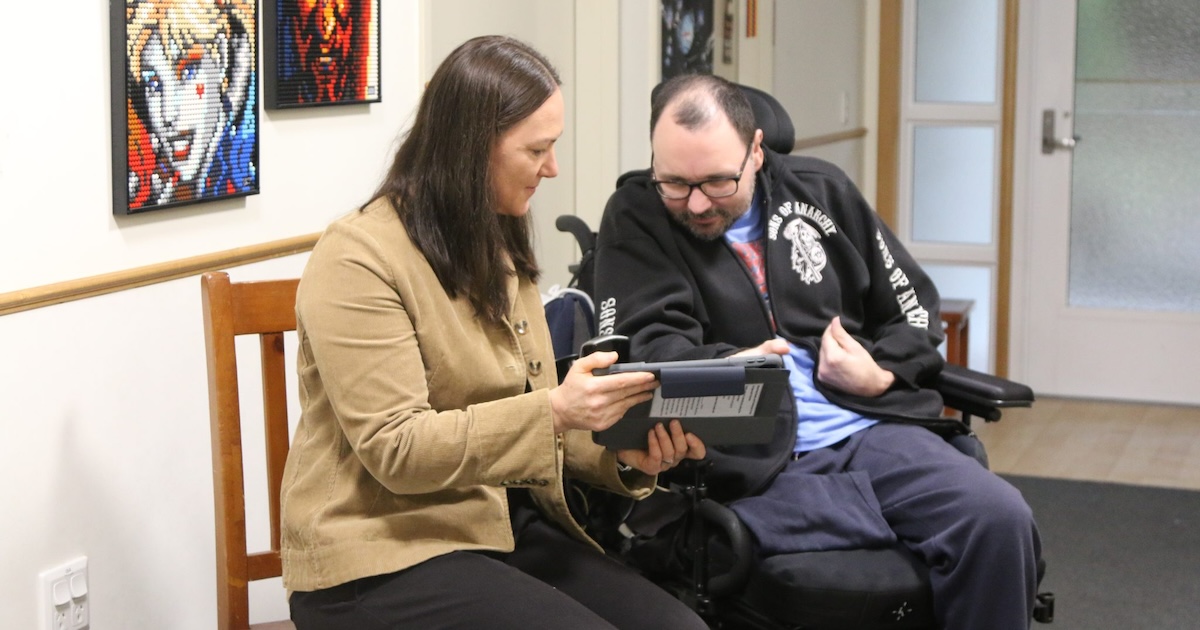According to a paper titled Pain Management in the Elderly Population: A Review published in The Ochsner Journal in 2010, pain may be underreported because some elderly patients incorrectly believe that pain is a normal process of aging. In addition, caregivers and relatives are often the most reliable source of information. However, assessing pain levels is usually not straightforward – it can be subjective and inaccurate.
To address this challenge, Australia-based company PainChek has developed the world’s first smart phone-based pain assessment and monitoring app. Philip Daffas, CEO of PainChek shares with MobiHealthNews about the origins of the app, regulatory developments for the app in different markets and his plans for the company in 2020.
Could you share with us about the origins of PainChek? How did the idea of using facial recognition analytics to assess pain come about?
The app was originally borne out of research at Curtin University in Western Australia into facial recognition and pain assessment. This then led to years of development work to ensure the app was capable of generating reliable measures of pain.
The main problem is that pain often goes unrecognized and under-treated in people with communication difficulties such as dementia. Although tools exist to assess pain, they are often subjective, manually based and subsequently under used by carers. PainChek has evolved into a secure smart phone-based medical device that uses artificial intelligence to assess and score pain levels in real time and update medical records in the cloud.
PainChek has been seeing lots of adoption and a national trial within Australia, as well as securing patents outside the Australian market, such as the US and most recently in January 2020, Japan. PainChek also signed an agreement with Allium Healthcare in Singapore last August. What are some of PainChek’s broad plans for 2020, within Australia and in new markets such as Japan?
In Australia, the company has received a federal government grant to roll out PainChek to the 100,000 residents living with dementia in aged care. The federal government is providing a one year PainChek license to all Residential Aged Care facilities for their residents living with dementia and with cognitive impairment. We are encouraging all Residential Aged Care facilities to register their interest as soon as possible as there are limited licenses and the grant is time limited.
Even though the Japanese patent is great news, PainChek doesn’t have immediate entry plans into Japan due to the need for regulatory clearance. But we do have a very active business development program focused on a range of markets. In the UK, the first 1,000 PainChek license agreement was signed with Person Centered Software UK in late 2019. Person Centered Software is based in the UK and supplies Care Management systems to more than 1,200 aged care providers, servicing over 40,000 residents. PainChek integration into Person Centered Software’s industry leading product range has been completed. Under the agreement, Person Centered Software is distributing PainChek to its UK client base through their sales, marketing and service capabilities.
We also completed our first direct license agreement into New Zealand for 300 beds with the Enliven Aged Care home on the South Island during the past quarter. We continue to receive strong interest from other international markets, which will further expand our commercial progress and global market reach where we do have regulatory clearance including the broader European markets.
You mentioned before that the application of PainChek will go beyond aged care and dementia patients, into areas such as GPs and hospitals. Are there any plans/developments in that area?
Our main focus for the moment is aged care. GPs and hospitals are new market opportunities we are exploring now directly and through potential partnerships with companies like Philips Healthcare. And then next up is the Children’s application. In regard to the PainChek Children’s App, it serves a potentially even larger market than the Adult App with a large hospital market and home care market opportunity.
Globally there are more than 400 million children at any one time between the ages of 0-3 years. Due to the rapid changes and development in children’s faces, the PainChek Children’s App is scheduled to be delivered in 3 age group versions, with the youngest Infant App (infants 0-1 years of age) being the first developed and now undergoing clinical research.
The research agreement with Melbourne’s Murdoch Children’s Research Institute (MCRI) was signed in June 2019. MCRI is the largest child health research institute in Australia, and one of top three worldwide and their campus partners include Royal Children’s Hospital in Melbourne and the University of Melbourne’s Department of Paediatrics.
The PainFaces study is being led by Professor Franz Babl and Associate Professor Di Crellin in the Emergency Department (ED) of the Royal Children’s Hospital. The clinical trial version of the PainChek Infant App has been finalized for use in the study which is scheduled to commence in Q1 calendar 2020.
The pain scores derived using the PainChek Infant App will be compared to those obtained using observational children’s pain assessment tools by independent assessors on 100 infants undergoing painful procedures within the ED. Completion is dependent on the recruitment of the 100 children and is currently projected for Q2/Q3 calendar 2020.
The results and learnings from the research will support applications for regulatory clearance of PainChek Infant’s App with the Therapeutics Goods Administration (TGA), CE Mark, Europe, and FDA in the USA. We are planning for TGA clearance during Q4 calendar 2020.
The original version of this article first appeared on MobiHealthNews, a HIMSS Media publication.
